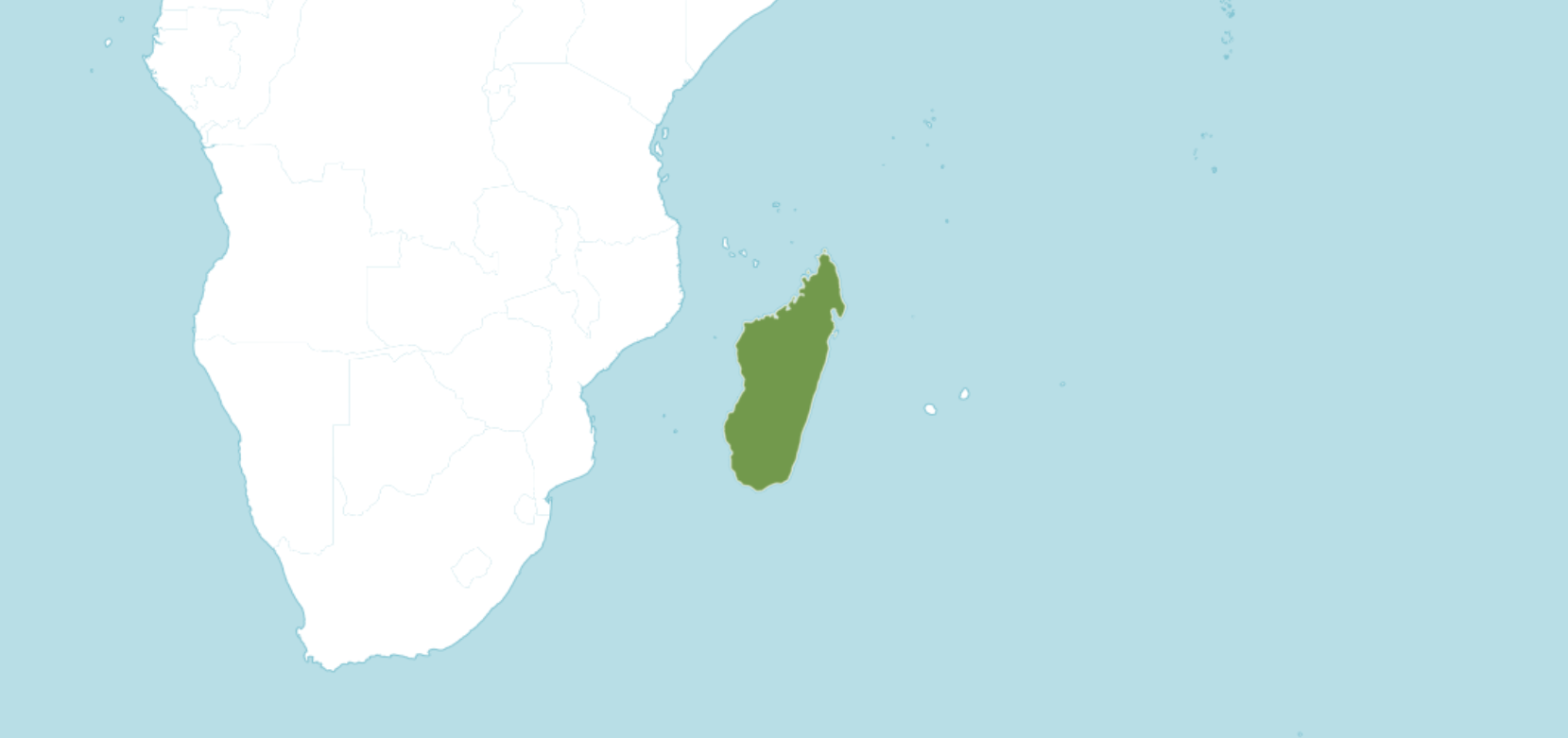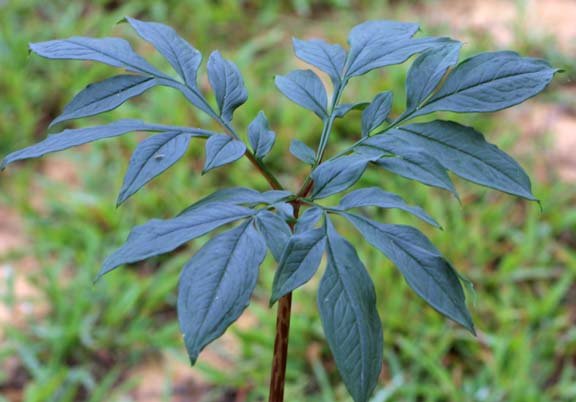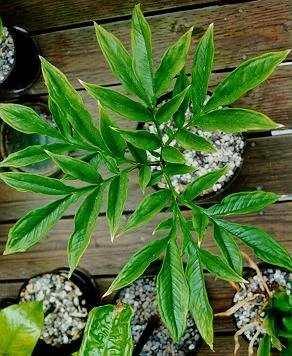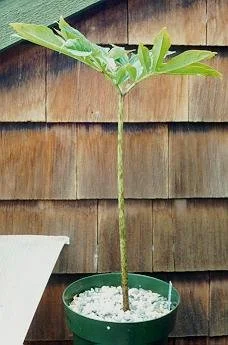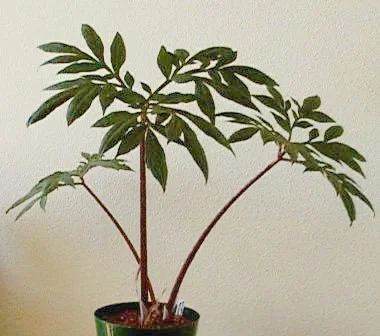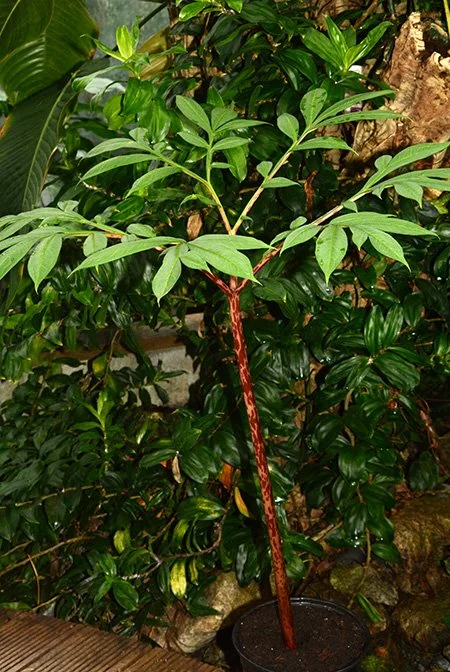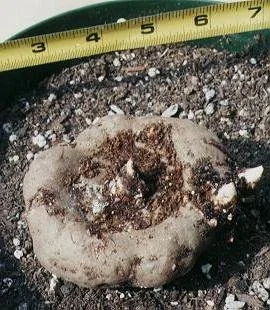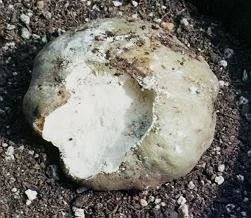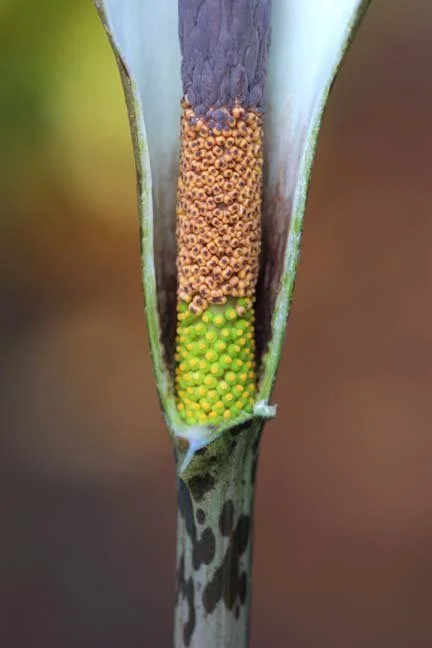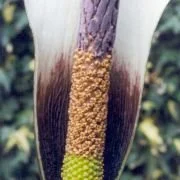AMORPHOPHALLUS ANKARANA
ORIGINAL DESCRIPTION:
Amorphophallus ankarana Hetterscheid, Ittenbach & Bogner, spec. nov. —
“Differt ab A. hildebrandtii stigmate sessili, spadice spatham distincte excedenti et spatha intus alba.”
Type: Hetterscheid H.A.M. 280-T (L, holo, spirit coll., inflorescence), cult. in Leiden Bot. Garden, flowered 20 October 1995, Madagascar, Ankarana Massif (orig. coll. Jongkind s.n.)
SYNONYMS:
HOMOTYPIC SYNONYMS: N/A
HETEROTYPIC SYNONYMS: N/A
ACCEPTED INFRASPECIFICS: N/A
DISTRIBUTION: Madagascar
CLIMATE: Unknown
ECOLOGY: It is a tuberous geophyte and grows primarily in the seasonally dry tropical biome. Humus pockets in limestone rocks of karst areas (such areas called ‘tsingy’ in Malagasy).
SPECIES DESCRIPTION:
Tuber disciform, 10–15 cm in diam. and 5–7 cm high, weighing to ca. 1 kg, pale tan, developing several globose offsets per season, these directly attached to the main tuber. Cataphylls ca. 3, pink or whitish pink, with dark pink to ochre-coloured, oval and partly confluent spots, thin, 20–30 cm long, 4–6 cm in diam. Leaf developing alongside the inflorescence; petiole 15–80 cm long and 2–5 cm in diam., smooth or very shallowly ribbed, fleshy, dirty pale greenish or pale brownish with scattered small, oval, reddish brown to brown spots, near the base a reddish brown hue all over; lamina unfolding after flowering, highly dissected, 30–100 cm in diam., rachises narrowly winged; leaflets coriaceous, ovate-lanceolate to lanceolate, 4–22 cm long, 1.5–7 cm in diam., acuminate to long acuminate, upper surface dull dark green, lower surface bright green.
INFLORESCENCE:
Inflorescence developing with the leaf or slightly earlier, erect. Peduncle 30–75 cm long and 1–2.5 cm in diam., coloured as petiole. Spathe erect, elongate triangular, 16–35 cm long, 10–14 cm in diam., apex acute, base rounded, margins often strongly revolute, limb and base not separated by a constriction, limb slightly or strongly twisted lengthwise, margin strongly undulate, base tubular, ovoid or cylindric, outside glossy dark or pale olive green to olive brown, with scattered, rounded, reddish brown spots and pale brownish veins, inside brownish purple at the base, above white with a faint purplish flush, verrucate, verrucae upwards chained to form long branching ridges, limb outside glossy olive brown or pale olive brown, with scattered, rounded, reddish brown spots and pale brownish veins, inside white, sometimes with a faint purplish flush at the centre, or all purple. Spadix sessile, longer than spathe, 28–40 cm long; female zone slightly obconic, 1–2.5 cm long, 1.1–1.8 cm in diam. at the base, flowers congested or slightly distant; male zone cylindric, 2.5–4 cm long, 1–1.6 cm in diam., flowers slightly distant, in distinct spirals, upwards more distant and gradually merging into a zone with irregular staminoides; appendix (incl. staminodial region) 23–35 cm long, 0.9–1.8 cm in diam., elongate conic, gradually tapering to the (sub)acute apex, brown or purplish brown, with a distinct waxy layer, producing a suffocating spicy odour or one reminiscent of cacao and oozing droplets of a clear fluid, the basal region containing deformed male flowers, showing all stages from normal flowers to papillate staminodes, the latter upwards merging to form broad ridges, leaving deep fissures in between, still higher up the ridges merge and form the outer wall of the appendix. Ovaries ovoid-pyriform or globose, 2–2.5 mm in diam., ca. 2.5 mm high, bright pale green, the apical region sometimes purplish, unilocular (pseudomonomerous); style absent or almost absent (to ca. 0.3 mm long); stigma slightly depressed, ovate or subtriangular in cross-section, shallowly 2- or 3-lobed, 0.5–1.2 mm in diam., 0.5–1 mm high, lobes obtuse, surface yellow, densely papillate. Male flowers consisting of 2–4 stamens; stamens ca. 2 mm long; filaments absent; anther obtuse, ca. 1.5–2 mm long, ca. 1.5–2 mm in diam., orange, connective and base of anthers reddish purple, pores apical, elongate. Pollen inaperturate, exine psilate, shed on the third day of flowering. Infructescence with spathe remains; fruiting part cylindric, 12 cm long, 2.5 cm in diam.; berries reddish, 0.7–0.9 cm long, 0.5–0.7 cm in diam.; seeds ovoid, 0.5–0.7 cm long, 0.4–0.5 cm in diam. Chromosomes: 2n = 26.
VARIEGATED FORMS: N/A
ETYMOLOGY: The species epithet refers to the locality in which it was found, the Reservé Spéciale d’Ankarana in north Madagascar (situated in the Ankarana massif)
NOTES: Additional collections: Hetterscheid H.A.M. 048 (L), cult. in Leiden Bot. Garden ex Madagascar, Ankarana Massif (orig. coll. Bogner 168 [K, M], also cult. in Munich Bot. Garden).
CULTIVARS: N/A
HYBRIDS: Amorphophallus impressus x Amorphophallus ankarana

